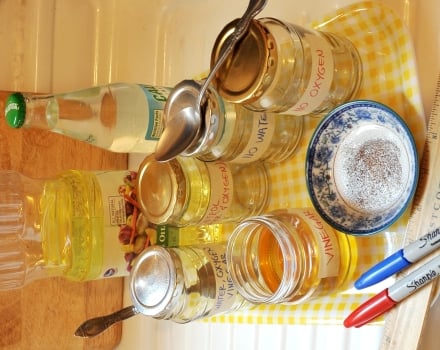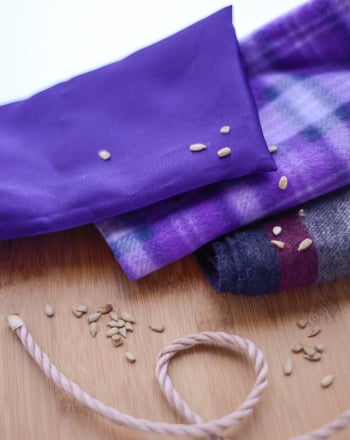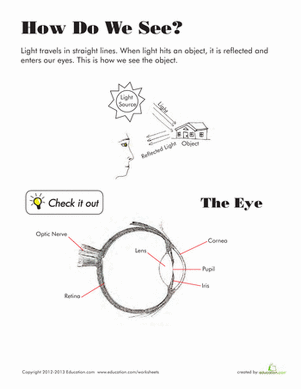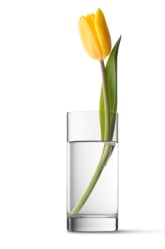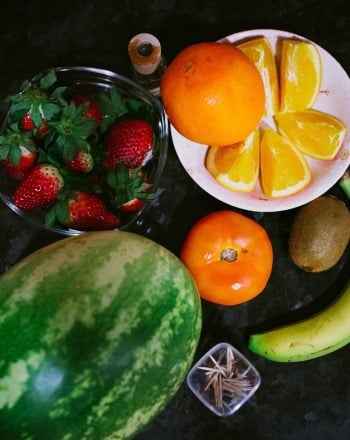Science project
How Do Icicles Form?
Get ready to chill out. In this experiment, you’ll watch ice crystals form. To get a clear view of the ice forming, you’ll create an ice viewer in your freezer!
Problem
How do icicles form?
Materials:
- 5 ounce paper cup
- 7 ounce paper cup
- 7 ounce clear plastic cup
- Ruler
- Large index card
- Masking tape
- ½ foot square of corrugated cardboard
- Paper towel
- Scissors
- Pin
- Pencil
- Transparent tape
- Freezer
- Stopwatch
Procedure
- First, let’s build the viewer. Take the 7 ounce paper cup and label it #1.
- Turn the cup over, and use the pin to make a small hole in the middle of the bottom of the cup.
- Cover the hole by placing a piece of masking tape on the bottom of the cup, and fill the cup 2/3 full with water.
- Put it in the freezer. Set your stopwatch for 30 minutes.
- Place the paper towel onto a table and put the 5 ounce paper cup on top of it. Label this cup #2.
- Using the pencil, draw around the base of the cup and cut out the circle from the paper towel.
- Place the circle of paper towel into the bottom of the cup.
- Sharpen your pencil, and then push the pencil down through the paper towel in the second cup and through the bottom of the cup. Do this three times to make three evenly spaced holes.
- Place Cup #2 onto the index card and draw another circle around the base of the cup. Add about 1/8 of an inch around the perimeter of the circle, and then cut it out.
- Slide the cup through the hole you made.
- Adjust the diameter of the circle until 2 inches of the cup pokes through the bottom of the paper. The rest of the cup should be above the paper. The paper should look like a skirt wedged onto the middle of Cup #2.
- Place the clear plastic cup at the bottom of the index card. Use the transparent tape to attach the clear plastic cup to the index card.
- Now, you’ll create a stack of cups. The plastic cup goes on the bottom. The index card goes in the middle. Cup #2 sticks through the index card into the plastic cup.
- After thirty minutes, take Cup #1 from the freezer, remove the tape from the bottom, and put it into Cup #2.
- Clear a space in the freezer for your stack of cups. Place the corrugated cardboard on a freezer shelf so that you have an even place for your stack of cups to stand. Put the cups into the freezer on top of the corrugated cardboard, and set your stopwatch for an hour.
- Create a hypothesis, your best guess about what is going to happen.
- After an hour, open up the freezer. What happened?
Results
After an hour, baby icicles will poke through the bottom of Cup #2.
Why?
So how do icicles form? In this experiment, you created a situation where small icicles could grow. First, you made your water cold. A liquid turns into a solid when its temperature drops below its freezing point. For water, this freezing point is zero degrees Celsius.
As freezing begins, molecules gather into clusters, forming crystals. When you added Cup #1, you created the perfect conditions for natural icicle formation—a large amount of very cold water. A small amount of the water had likely formed crystals by the time you removed the cup from the freezer. These freezing nuclei provide surface area for other ice crystals to form. The exposed fibers on the shredded edges of the paper towel do the same thing, providing areas where icicles could begin to grow.
Gravity helped move the water through the hole in the first cup into the hole in the second cup. As water drips down and begins to freeze, it releases tiny amounts of heat. This means that at the top of the icicle, it’s slightly warmer at the top than at the bottom, since warm air rises. This prevents the icicle from bunching up at the top and creating an ice chunk. Instead, the ice forms at the tip of the existing icicle where conditions are the coolest. This makes the long, thin form of an icicle. For an icicle to grow it needs a constant, flowing stream of water that moves downward over the existing ice.
Going Further
Stalactites are long, thin, carrot-shaped rocks that grow in caves. They form through the same process, as calcium-rich water moves downward, depositing
Education.com provides the Science Fair Project Ideas for informational purposes only. Education.com does not make any guarantee or representation regarding the Science Fair Project Ideas and is not responsible or liable for any loss or damage, directly or indirectly, caused by your use of such information. By accessing the Science Fair Project Ideas, you waive and renounce any claims against Education.com that arise thereof. In addition, your access to Education.com's website and Science Fair Project Ideas is covered by Education.com's Privacy Policy and site Terms of Use, which include limitations on Education.com's liability.
Warning is hereby given that not all Project Ideas are appropriate for all individuals or in all circumstances. Implementation of any Science Project Idea should be undertaken only in appropriate settings and with appropriate parental or other supervision. Reading and following the safety precautions of all materials used in a project is the sole responsibility of each individual. For further information, consult your state's handbook of Science Safety.



